Blossom Tales: The Sleeping King is a retro action-adventure videogame about a rookie knight who embarks on a quest to save her kingdom. Lily is a girl excited to be inducted into the Knights of the Rose, but her special day is interrupted when King Orchid is put into an enchanted sleep by his jealous brother, the wizard Crocus. The Knights are dispatched to three corners of the kingdom to gather mystical ingredients for a potion that will awaken King Orchid, each hidden away in a dangerous dungeon. Though Lily is told to remain in the castle to begin her training, she sneaks out to help her compatriots. Despite the other knights’ best efforts, soon Lily is the only one left who can retrieve the ingredients and awaken the sleeping king before Crocus can seize control of the kingdom.
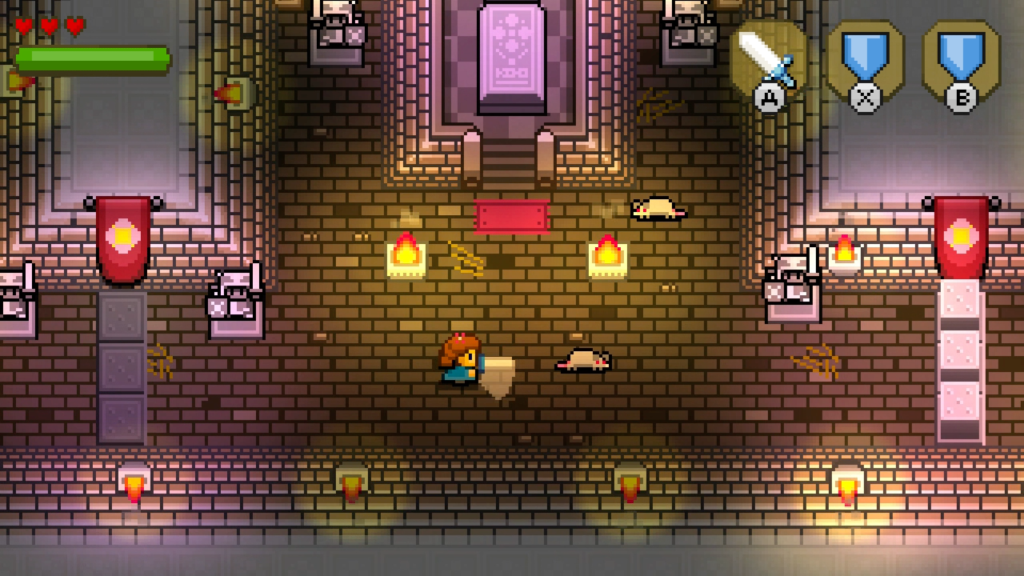
Blossom Tales is unmistakably inspired by The Legend of Zelda, particularly that venerated series’ most successful sprite-based entries from the early 1990s. I view the world from a top-down perspective, guiding Lily through forests, swamps, and fields to find caves and dungeons containing monsters and treasure. Some treasures give Lily new abilities which let her remove barriers to certains areas of the kingdom. Bombs destroy boulders and cave entrances, boomerangs activate distant switches, and a bow fires arrows into round target buttons. If I’m especially diligent in my exploration, I can discover Pieces of Heart, four of which expand Lily’s heart meter by a single point. This is all copied straight out of the classic Zelda design book.
Blossom Tales also copies Zelda’s combat design. As part of her knighting, Lily is bestowed a sword and shield she uses against Crocus’ minions. A simple sword swing can knock back an enemy or cut away a bush, but they have little sense of strength or impact. The accompanying muted swishing sound that is often drowned out by the soundtrack does little to sell the effect. Basic attacks have such miniscule range that Lily is often hit by her targets before she can hit them. Worse still, they deal so little damage that they require many additional strikes to dispatch. Far from feeling like the kingdom’s heroic savior, Lily plays more like a child flailing limply at monsters with a sharp metal stick.
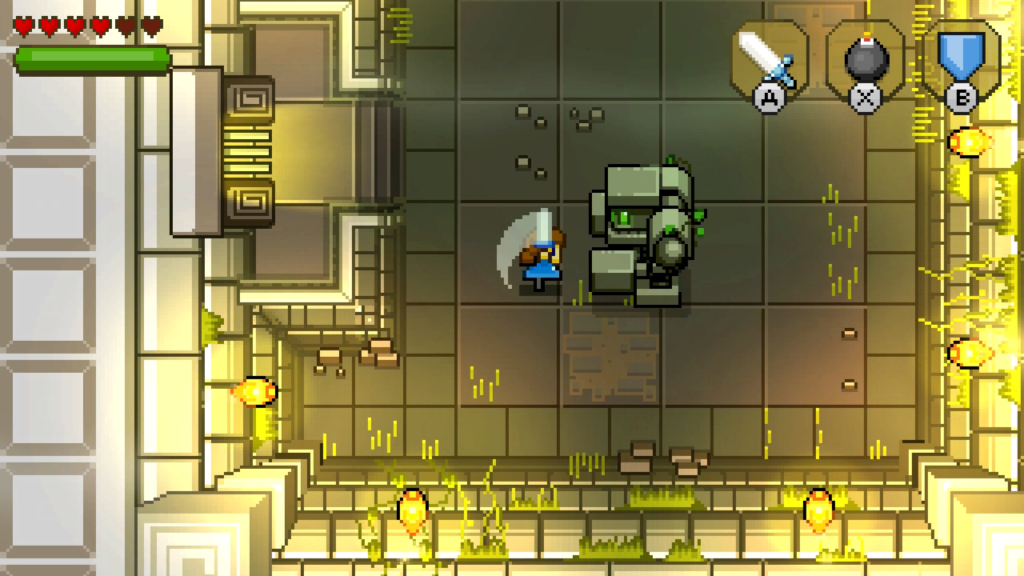
I quickly learn to rely on Lily’s charging thrust instead. Like her green tunic-clad inspiration, Lily can perform a spin attack when I hold down then release the attack button. Unlike Link, I can press the attack button again mid-spin to send Lily lunging forward, slamming her sword into an enemy with impressive strength. It deals far more damage, has much greater range, and is accompanied by a satisfying and audible thump when she connects.
I am also disappointed by the way it feels to move. Lily slides from place to place at the suggestion of my controller, blundering through the kingdom with frenetic energy. It’s never quite enough to make Blossom Tales difficult to play, but every movement is haunted by a sensation that the player character is off-balance. This sensation is amplified by dungeon rooms that require precision movement to navigate. While facing down a gauntlet of magical traps and monsters where the slightest misstep will send Lily back to the last checkpoint, it can feel like her greatest enemy is her own legs.
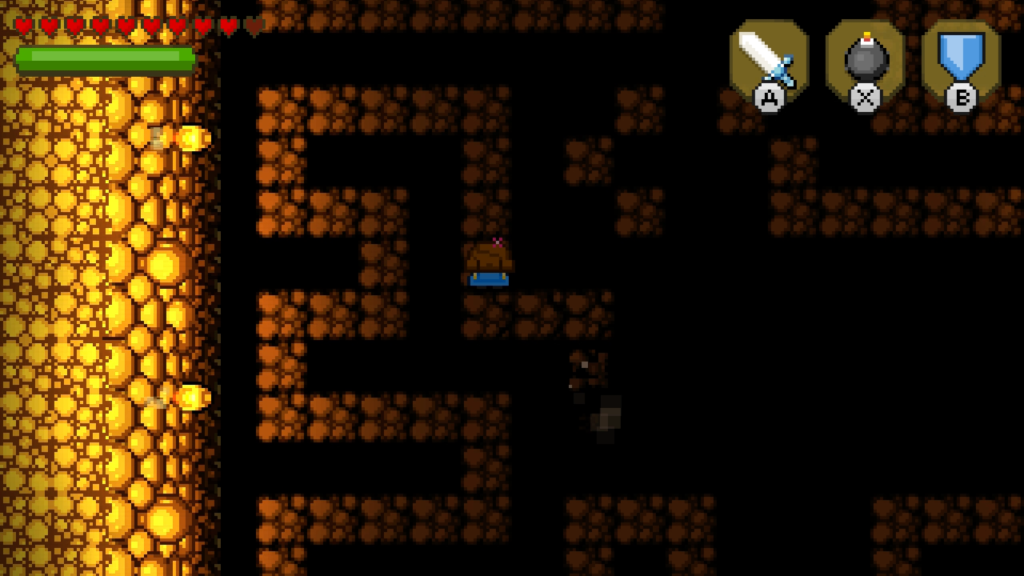
I spend a great deal of time with these unsatisfying movement and combat systems while trying to resolve the various sidequests offered by the kingdom’s citizens. By delivering a dubious post office’s mail, turning in stacks of collectibles, or just plain-old killing a number of a specific enemy, Lily earns rewards like money, upgraded items, and Pieces of Heart. Bafflingly, there is no quest log or markers showing where to turn quests in. With a map so devoid of detail as to be useless and most of the various towns’ buildings looking identical, I have to rely on handwritten notes and my unreliable memories to turn in quests and claim their rewards. For a videogame made in 2017, Blossom Tales’ quest design feel remarkably like ones from the 1990s videogames it tries to modernize.
Progress through the caves and dungeons are frequently sealed by puzzles I must solve before Lily can progress. Again borrowing from its Legendary inspirations, these puzzles are often of the switch-hitting and rock-exploding variety. They are as familiar, comforting, and mindless here as they have become in Link’s Hyrulean adventures. Less cozy are the preponderance of memory-based and paint-the-floor puzzles. Long before I reach the ending I learn to groan audibly when I encounter yet another memory-based puzzle that tasks me with repeating a random pattern flashed across four blocks to open a doorway or reveal a collectible.
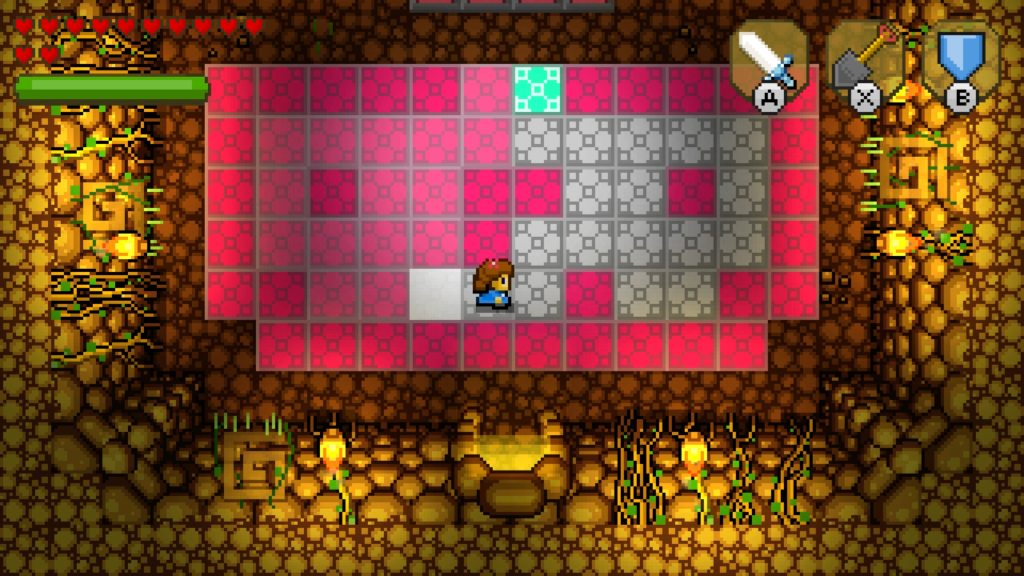
I wish more puzzles showed the ingenuity used in the handful that require the boomerang. Like Link’s boomerang, Lily can throw it a short distance before it arcs back into her hands. What’s different is Lily’s boomerang travels much more slowly, giving me time to change her position and bend the boomerang’s path into unorthodox curves. A few puzzles take advantage of this quirk to satisfying effect. Too few. It’s frustrating experiencing Blossom Tales iterate its most pedestrian puzzle ideas into aggravation while the one unique puzzle it spins from the Zelda wool goes underutilized.
The twist to Blossom Tales’ familiar premise is a framing device about a grandfather telling a bedtime story to his grandchildren. This clever conceit allows the grandfather’s narration to justify the early exposition and provide a little more emotion than the simple graphics are able to convey. While he narrates, the children will sometimes interject with embellishments to the story. These moments allow me to choose what event Lily will encounter at a few specific points. Disappointingly, these moments are few and consist only of choosing which variety of enemy she fights on that screen. It’s a fantastic idea let down by little use and boring execution.
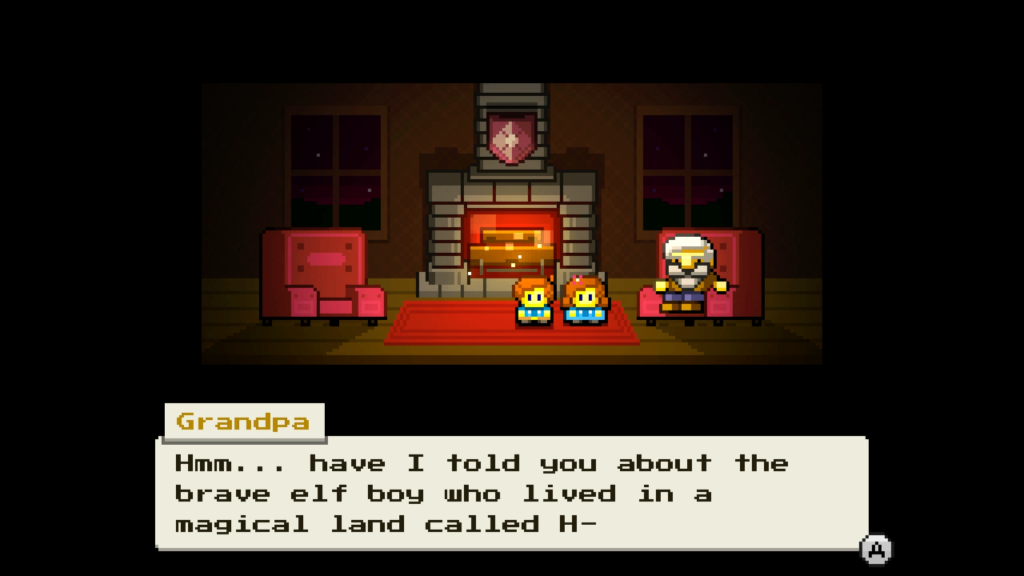
I want to like Blossom Tales: The Sleeping King more than I am able. It’s not a bad videogame. Its difficulty never approaches frustration and its design never reaches ineptness. This does not stop me from telling myself throughout that I should be having more fun than I am. Lily’s sword swings are weak with pitiful range, pushing me into an over-reliance on her charge attack. Her movements are accompanied by an unpleasant sliding sensation that feels just short of beyond my control. Puzzles repeat themselves often, with the memory puzzles in particular standing out as ponderous chores. Most collectibles are not hidden with any semblance of effort. The framing device has promise, but is undercut by sparse and unimaginative implementation. The whole videogame feels like it needed more time and refinement in development before it was unleashed on the playing public. It has promise, but promises often go unfulfilled.